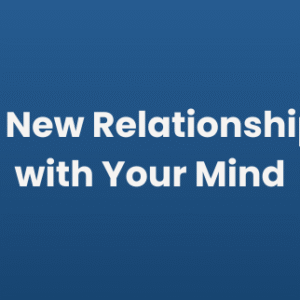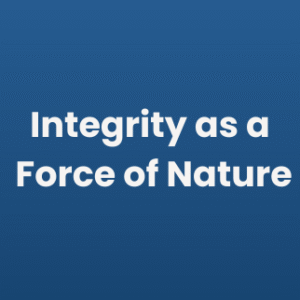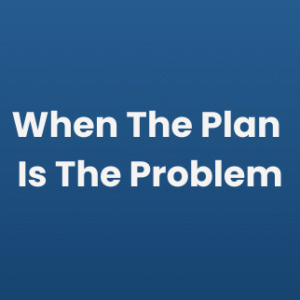Have you ever felt a tension between the “textbook” way to lead and what you know works in the messy reality of your role?
It’s a common feeling for any seasoned professional. You’ve read the books, you’ve taken the courses, and you have the certifications. Yet, you find that in the most critical moments, the real work happens in a space where the playbook has no answers.
This isn’t just a personal struggle; it’s a predictable cycle in the evolution of any professional field, from medicine to coaching and leadership itself. Understanding this cycle provides a powerful mirror for our own professional journeys, helping us make sense of our frustrations and our greatest opportunities for impact.
The Five Stages of Professional Evolution
This cycle explains how groundbreaking ideas are born, become dogma, and are eventually reborn. Each stage is necessary, and each carries its own risk.
Stage 1: The Edge (Practitioner Innovation)
All true innovation begins at the frontier where theory meets reality. It’s where experienced practitioners, faced with a novel problem or a situation of immense complexity, improvise.
They create a new solution that defies the current rulebook, not because they want to be a rebel, but because the old rules are no longer sufficient. This new way is often intuitive, and highly effective.
Risk: Inconsistency. The innovation relies on the specific genius of the practitioner and is difficult to replicate.
Stage 2: The Playbook (Standardization)
To scale and teach, the innovations from the edge must be observed, deconstructed, and codified. A map is created from the territory. This is where unique discoveries are turned into models, frameworks, and certifications.
Think of a brilliant therapist’s intuitive approach being turned into a new therapeutic modality, or a founder’s unique hiring method becoming a company-wide interview process. This stage is essential for growth and training, but it inevitably loses the nuance of the original discovery.
Risk: Oversimplification. The living art of the practice is reduced to a static set of steps.
Stage 3: The Institution (Academic Consolidation)
The playbook becomes dogma. Universities, professional bodies, and corporate training departments build entire curricula and research programs that reinforce the standardized model. The map is now mistaken for the territory.
The original “why” behind the practice is often lost, replaced by a rigid adherence to the “how.” Compliance becomes more important than effectiveness.
Risk: Ossification. The field becomes rigid, slow to adapt, and resistant to new ideas.
Stage 4: The Dissent (Redefinition)
At the edge, a new generation of masters take on the role of iconoclasts, and begin to push back. They see the growing gap between the rigid, institutional model and the evolving demands of reality.
Their dissent arises from a rift between the codified representation of reality (the playbook) and the fluid, complex territory of their lived, phenomenological experience.
For such a master, to perpetually apply the map when it no longer corresponds to the terrain is an act of professional and intellectual dishonesty.
Therefore, their dissent is therefore an expression of integrity; a creative act of deconstruction. By invalidating the old map, they return the territory to an “uncharted” state, creating the fertile void for the next cycle of innovation and positioning themselves to become the Pioneer of the new paradigm.
Risk: Fragmentation. As new schools of thought emerge, the field can become fractured and divided.
Stage 5: The Renewal (or Decline)
The institution is now at a crossroads. It can either evolve by integrating the insights from the rebellion—which sparks a new wave of innovation and begins the cycle anew—or it can resist.
If it resists, it becomes an obsolete relic, clinging to an outdated model while the real, impactful work moves elsewhere.
Risk: Irrelevance. The institution loses credibility as more impactful practitioners voice a loss of faith and move out.
This Cycle in Your Reality
For coaches, we see this over the long run. We learn the powerful models and approaches in our training (Standardization). But true mastery arrives the day we are willing to let them all go and work with pure, unadulterated presence, responding only to the human being in front of us (Dissent and Innovation).
For leaders, this cycle is your daily reality. Your organization has its playbook—its performance management systems, its sales methodologies, its “way we do things.” You are often tasked with enforcing that standard. But your greatest impact often comes when you have the wisdom to see when the playbook is failing and the courage to allow your team to innovate at the edge.
Where Are You In This Cycle?
This cycle isn’t just an academic theory; it can be a diagnostic tool. The tension you feel is real, and understanding your place in this cycle can bring immense clarity. Take a moment for a few honest questions:
- Where are you in this cycle right now? Are you a pioneer creating the first way, a teacher codifying the proven way, a custodian enforcing the only way, or the master whose integrity demands they create a new way?
- In your leadership, are you primarily enforcing the standard, or are you creating the space for innovation at the edge? Both are necessary at different times, but which is your default mode?
- What “rebellion”—what new definition of mastery—is your field, your organization, or your own leadership calling for? What rigid rule, if broken, would unlock a new level of impact for you and your team?
An Awakened Leader develops the wisdom to see where they are in this cycle and the courage to embody the role that is needed most, even if it means challenging the very institutions that grant them their authority.




